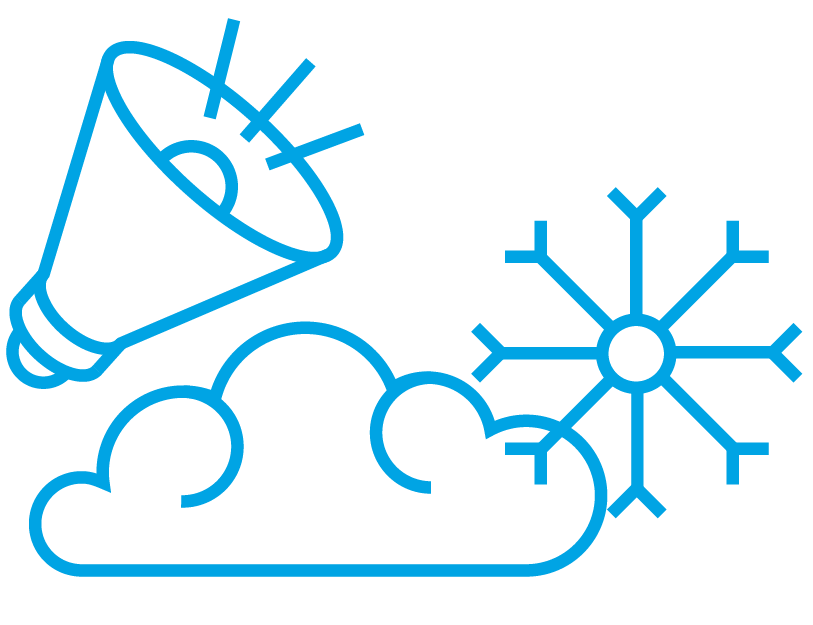- Understanding Data Segmentation in Programmatic Advertising
- The Effective Use of Data Segmentation
- Examples of Seasonal Campaigns
- Leveraging Audience Data for Seasonal Campaigns
Companies, marketers and advertisers are constantly seeking ways to reach their target audience with precision and relevance, especially during seasonal promotions. When people are particularly interested in certain products and services related to the specific occasion.
This is where data segmentation strategies come into play, allowing businesses to tailor their marketing efforts to specific customer segments. By leveraging customer data and crafting targeted messaging, businesses can implement personalized offers that resonate with their audience, leading to higher engagement and conversions.
Understanding Data Segmentation in Programmatic Advertising
Data segmentation involves dividing a target audience into distinct groups based on specific criteria such as demographics, behavior, or purchase history. This allows marketers to create personalized and targeted campaigns that are more likely to resonate with their audience.
By understanding the unique characteristics and preferences of each segment, businesses can tailor their messaging and offers to better meet the needs of their customers. Effective data segmentation not only helps in reaching the right audience but also ensures that the marketing efforts are more cost-effective and impactful.
The Effective Use of Data Segmentation
Data segmentation can take various forms, including interest, demography and purchase segments.
- Demography segments categorize consumers based on variables such as age, gender, income, education, and location providing insights into their characteristics and preferences.
- Interest segments delve into the lifestyle, values, and personality traits of consumers, allowing businesses to understand their motivations and interests.
- Purchase segments focus on consumer actions and purchase behaviors, identifying patterns and preferences that can inform targeted marketing strategies.
This comprehensive approach to data segmentation empowers businesses to tailor their marketing efforts for maximum impact and customer engagement.
Precise Data in Seasonal Campaigns
Seasonal campaigns are a pivotal part of a business’s marketing strategy, offering opportunities to capitalize on specific times of the year when consumer spending is heightened. Whether it’s the holiday season, back-to-school period, or seasonal events, businesses can leverage data segmentation to precisely target their audience with relevant offers and messaging.
Precision in seasonal campaigns is essential for maximizing the impact of marketing efforts and driving higher engagement and conversions. By understanding the unique behaviors and preferences of different customer segments, businesses can ensure that their seasonal campaigns are tailored to resonate with their target audience.
Accuracy in seasonal campaigns not only increases the likelihood of capturing consumer attention but also enhances the overall customer experience. When consumers receive personalized and relevant offers during seasonal promotions, they are more likely to engage with the brand and make a purchase.
Examples of Seasonal Campaigns
Seasonal campaigns are a powerful tool for businesses to boost sales and connect with their audience during specific times of the year. These campaigns are designed to create a sense of excitement and urgency, often leveraging the holiday season to capture the attention of consumers.
Businesses offering unique promotions and experiences can effectively engage their customers and drive sales. In this context, leveraging audience data for seasonal campaigns can provide valuable inspiration for businesses looking to create impactful marketing strategies such as:

- A New Year’s campaign could be centered around promoting health and wellness products or services, targeting segments interested in self-improvement and personal development. For example, segments could include individuals looking to adopt healthier lifestyles, set fitness goals, or pursue new hobbies and skills in the upcoming year. The campaign could offer discounts on gym memberships, healthy meal delivery services, online courses, or productivity tools.
- A Valentine’s Day campaign could focus on promoting romantic gifts and experiences, targeting segments interested in relationships and romance. For example, segments could include couples, individuals in committed relationships, or those seeking love interests. The campaign could offer special deals on romantic getaways, couple’s spa packages, jewelry, or personalized gifts.
- A Mother’s Day campaign could highlight products and experiences that celebrate and appreciate mothers, targeting segments interested in honoring maternal figures. For example, segments could include adult children, spouses, or individuals looking to express gratitude to mother figures. The campaign could offer discounts on spa treatments, sentimental gifts, personalized items, or experiences such as brunch outings.
- A Back to School campaign could center around products and services relevant to students, parents, and educators, targeting segments preparing for the new academic year. For example, segments could include students of different age groups, parents shopping for school supplies, or teachers planning classroom resources. The campaign could offer back-to-school discounts on backpacks, stationery, educational apps, or tutoring services.
- A Halloween campaign could focus on promoting spooky and fun products and events, targeting segments interested in Halloween celebrations and themed activities. For example, segments could include costume enthusiasts, party planners, or families preparing for trick-or-treating. The campaign could offer special deals on costumes, party supplies, haunted house tickets, or festive treats.
- A Black Friday campaign could revolve around offering exclusive discounts and deals on a wide range of products, targeting segments interested in finding major savings and holiday shopping. For example, segments could include bargain hunters, early holiday shoppers, or individuals seeking high-value purchases. The campaign could offer limited-time offers, doorbuster deals, and flash sales.
- A Cyber Monday campaign could emphasize online-exclusive promotions and tech-related products, targeting segments interested in digital deals and convenient shopping experiences. For example, segments could include tech enthusiasts, online shoppers, or individuals seeking tech gifts and gadgets. The campaign could offer significant discounts on electronics, digital subscriptions, software, or e-commerce purchases.
- A Christmas campaign could center around spreading holiday cheer and offering a diverse range of gifts and experiences, targeting segments interested in festive traditions and gift-giving. For example, segments could include holiday enthusiasts, gift shoppers, or individuals planning holiday gatherings. The campaign could offer promotions on seasonal decorations, gift sets, experiential gifts, or charitable donations.
Season campaigns:
- A Spring Sales campaign could feature a wide range of products and services associated with the season, targeting segments interested in refreshing their lifestyles and surroundings. For example, segments could include gardening enthusiasts, individuals planning spring cleaning projects, or those interested in outdoor activities. The campaign could offer special promotions on gardening tools, home organization products, outdoor furniture, or travel gear.
- A Summer Sales campaign could focus on promoting products and activities suitable for the warmer weather, targeting segments interested in leisure and outdoor experiences. For example, segments could include vacationers, outdoor enthusiasts, or individuals planning summer events and gatherings. The campaign could offer discounts on swimwear, outdoor gear, travel accessories, or event tickets.
- An Autumn Sales campaign could feature products and experiences that capture the essence of the season, targeting segments interested in embracing fall traditions and flavors. For example, segments could include nature enthusiasts, food and beverage connoisseurs, or individuals preparing for autumn festivities. The campaign could offer discounts on seasonal apparel, pumpkin spice products, outdoor gear, or fall-themed home goods.
- A Winter Sales campaign could highlight cozy and festive products suitable for the colder months, targeting segments interested in holiday celebrations and indoor activities. For example, segments could include holiday shoppers, home entertainers, or individuals seeking warmth and comfort. The campaign could offer promotions on winter apparel, holiday decorations, gourmet treats, or indoor entertainment options.
Leveraging Audience Data for Seasonal Campaigns
In the era of big data, businesses have access to a wealth of customer information that can be leveraged to tailor targeted seasonal campaigns. Customer data encompasses a wide range of insights, including purchase history, browsing behavior, engagement with certain topics, and demographic information.
By using this data, businesses can gain a deeper understanding of their customers and identify segments that exhibit distinct behaviors and preferences during different seasons. Leveraging customer data for seasonal campaigns allows businesses to create personalized and relevant marketing strategies that resonate with their audience.
Audience Data Segments in Seasonal Campaigns
Audience data segments in seasonal campaigns are a pivotal marketing approach that enables businesses to tailor their efforts to specific themes and consumer preferences.
New Year’s resolution
Individuals interested in:
self-improvement & lifestyle
-
- fitness
- wellness products
- season tickets for the gym
Christmas
Individuals interested in:
holiday shoppers
-
- decorations
- targeted promotions
- holiday movies
Halloween
Individuals interested in:
Halloween enthusiasts
-
- costumes
- decorations & party supplies
- horror movies & games
Cyber Monday
Individuals interested in:
technology geeks & bargain watchers
-
- smart TVs
- home appliances
- gaming consoles
Summer Campaign
Individuals interested in:
season activists
-
- outdoor activities
- travel offers
- summer clothes & gadgets
The comprehensive approach empowers businesses to align their marketing efforts with the seasonal interests and behaviors of their target audience, maximizing impact and customer engagement.



